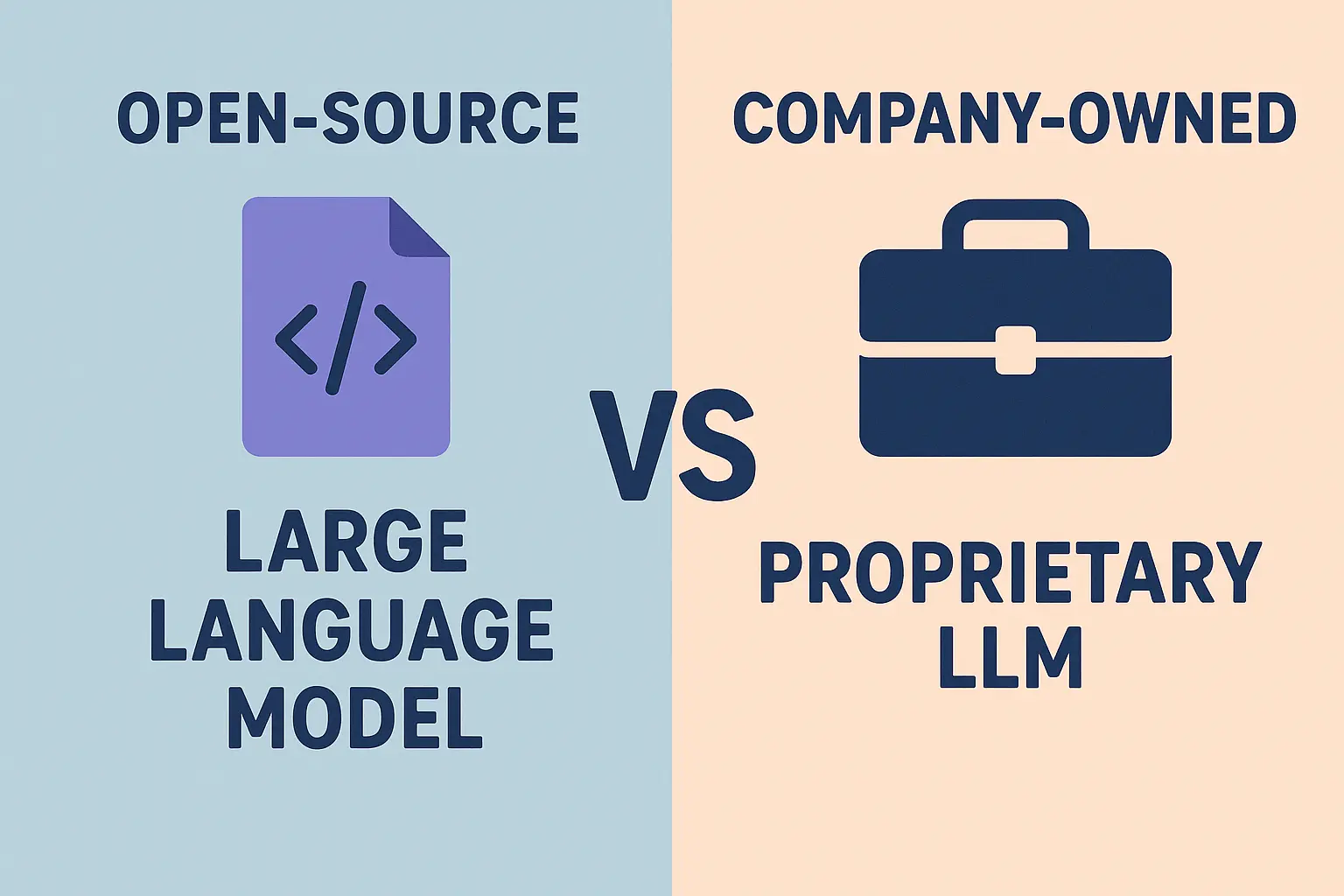Navigating Bias in Open-Source vs Proprietary LLMs

Analysis of Biased Outputs: Comparing Open-Source Large Language Models Against Company-Owned Proprietary LLMs
Estimated Reading Time: 7 minutes
- Understanding bias in LLMs is crucial for SMEs to enhance productivity and ethical use.
- Open-source models provide transparency and community engagement for bias mitigation.
- Customization in AI solutions can significantly improve model effectiveness and cultural adaptation.
- Cost considerations are essential when selecting models for bias analysis and mitigation.
- Staying informed on LLM advancements can optimize business AI strategies.
Table of Contents:
- Understanding Bias in LLMs
- Transparency and Bias Detection
- Community Oversight vs. Corporate Governance
- Customization and Bias Mitigation
- Real-World Performance and Bias
- Cost Considerations in Bias Mitigation
- Practical Takeaways for SMEs
- Conclusion
- FAQ
Understanding Bias in LLMs
Bias in AI systems not only impacts model performance but also can result in ethical dilemmas, affecting the credibility and trustworthiness of the technology. As small to medium enterprises (SMEs) increasingly adopt AI to automate workflows and enhance productivity, awareness and mitigation of bias in LLMs is critical. By analyzing the differences between open-source and proprietary LLMs, businesses can make informed choices about which models to deploy.
Transparency and Bias Detection
One of the most significant advantages open-source LLMs hold over proprietary models is their transparency. Open-source models allow users to inspect the architecture, weights, and training datasets, making it easier to identify potential biases. According to BakingAI, “This transparency creates an environment where biases can be more readily identified and addressed by the wider community”.
Conversely, proprietary LLMs function as “black boxes”, restricting access to the underlying code and training data. As discussed by Hatchworks, this lack of transparency complicates external efforts to analyze models for biases because stakeholders can only evaluate outputs rather than the mechanics behind them.
Community Oversight vs. Corporate Governance
Open-Source Community Approach
Open-source models benefit from a collaborative community where a multitude of researchers, developers, and practitioners contribute to improvements and engage in discussions around bias mitigation. This collaborative ecosystem fosters:
- Diverse Perspectives: By gathering input from various contributors, biases that one team might overlook can be flagged.
- Cultural Insights: Community oversight enhances the identification of culturally-specific biases, ensuring a more inclusive model.
- Accountability: Public scrutiny ensures stakeholders maintain awareness of bias issues, driving motivation for continuous improvement.
Proprietary Corporate Approach
On the other hand, proprietary models typically operate within structured governance frameworks. These models may benefit from dedicated ethics teams focused on bias detection, underwriting their efforts with substantial resources aimed at bias testing. Nonetheless, they often face limitations in adaptability as development aligns with internal policies rather than community needs.
Customization and Bias Mitigation
Customization is where the contrasts between open-source and proprietary LLMs become even more pronounced. Open-source models allow businesses to adapt models for specific tasks and domains effectively. This adaptability enables:
- Fine-tuning: Reducing domain-specific biases can enhance model accuracy in targeted applications.
- Bias Mitigation Techniques: Businesses can implement custom mitigation approaches that resonate with their particular operational contexts.
- Cultural Adaptation: Flexibility across diverse cultural contexts improves user experience and engagement.
On the contrary, proprietary LLMs often come equipped with user-friendly tools designed to assist with fine-tuning. However, such customization comes with restrictions:
- Modifications are often limited to authorized developers within the organization.
- The adaptability, while supported, is regulated by the company’s development roadmap, potentially sidelining emergent community needs.
Real-World Performance and Bias
Recent performance metrics have highlighted the disparities in how different LLMs handle bias. According to current findings:
- GPT-4o leads in quality metrics but has a mid-level performance regarding speed.
- Gemini 1.5 is recognized as offering the fastest overall performance among sampled models.
- The Llama-3-70B model stands out as the best open-source language model for coding applications.
These performance metrics reveal that bias manifestations can vary across different types of content generation. Users often report that while ChatGPT exhibits stronger logical performance, they might prefer the writing style produced by Claude. This variation underscores the importance of exploring multiple models to find the best fit for specific business needs.
Cost Considerations in Bias Mitigation
The financial implications of addressing bias in LLMs can be significant. Proprietary models generally incur higher initial and ongoing costs compared to open-source alternatives. Open-source models offer an economical entry point, particularly for startups, researchers, and hobbyists interested in bias study. Thus, the cost differences not only determine who can access these technology offerings but also who is empowered to participate in bias identification and mitigation.
Practical Takeaways for SMEs
As SMEs navigate the evolving AI landscape, understanding biases in LLMs is critical for effective deployment and automation strategies. Here are some actionable steps business leaders and entrepreneurs can take:
- Evaluate Transparency: Consider opting for open-source models that offer transparency in their data and algorithms, allowing for better bias detection and mitigation.
- Engage with the Community: Leverage the community-driven nature of open-source platforms to optimize bias detection and encourage collaborative improvements.
- Customization is Key: Whenever possible, select models that allow for customization to align the outputs with specific domain knowledge and cultural contexts.
- Explore Cost-Effective Options: Take advantage of cost-effective open-source models for pilot projects to analyze bias and test functionalities before committing to more expensive proprietary systems.
- Stay Informed: Regularly review performance metrics and follow industry updates to stay aware of new advancements in LLMs that could enhance your business processes.
Conclusion
Understanding the differences between open-source and proprietary LLMs in terms of bias is essential for SMEs looking to leverage these advanced AI technologies for their operations. These insights can inform better decisions, ensuring that companies not only improve their productivity through automation but also uphold ethical standards in AI use. Engaging with responsible AI practices not only protects brand integrity but also positions businesses favorably in a world increasingly influenced by intelligent technology.
Embracing these insights not only showcases your organization’s commitment to responsible AI usage but also enhances your overall standing within the industry as a thought leader. As technology continues to evolve, remaining agile in your approach to AI will be essential for sustained growth and innovation.
For tailored guidance on implementing AI technologies in your business, feel free to contact our team of experts at Your Company Name. Let us help you navigate the complexities of AI consulting and workflow automation for your success!
FAQ
What is bias in LLMs?
Bias in LLMs refers to the systematic and unfair discrimination in AI model outcomes, affecting their reliability and ethical implications.
How can SMEs mitigate bias?
SMEs can mitigate bias by selecting transparent open-source models, engaging with community feedback, and customizing applications as per specific needs.
Are proprietary models always better?
Not necessarily. While proprietary models may offer robust features, open-source models often provide better transparency and community support for bias issues.




